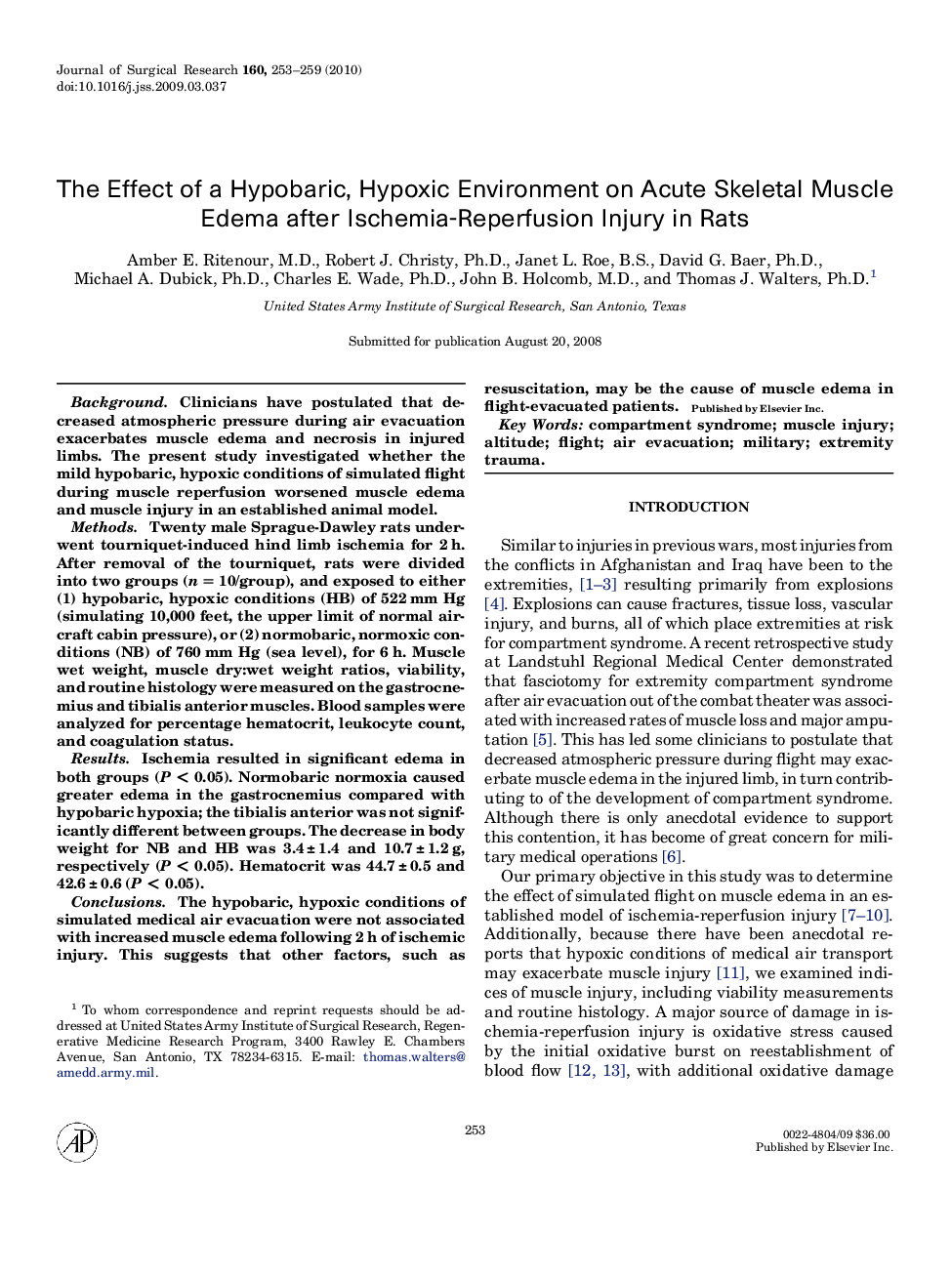| Article ID | Journal | Published Year | Pages | File Type |
|---|---|---|---|---|
| 4303111 | Journal of Surgical Research | 2010 | 7 Pages |
BackgroundClinicians have postulated that decreased atmospheric pressure during air evacuation exacerbates muscle edema and necrosis in injured limbs. The present study investigated whether the mild hypobaric, hypoxic conditions of simulated flight during muscle reperfusion worsened muscle edema and muscle injury in an established animal model.MethodsTwenty male Sprague-Dawley rats underwent tourniquet-induced hind limb ischemia for 2 h. After removal of the tourniquet, rats were divided into two groups (n = 10/group), and exposed to either (1) hypobaric, hypoxic conditions (HB) of 522 mm Hg (simulating 10,000 feet, the upper limit of normal aircraft cabin pressure), or (2) normobaric, normoxic conditions (NB) of 760 mm Hg (sea level), for 6 h. Muscle wet weight, muscle dry:wet weight ratios, viability, and routine histology were measured on the gastrocnemius and tibialis anterior muscles. Blood samples were analyzed for percentage hematocrit, leukocyte count, and coagulation status.ResultsIschemia resulted in significant edema in both groups (P < 0.05). Normobaric normoxia caused greater edema in the gastrocnemius compared with hypobaric hypoxia; the tibialis anterior was not significantly different between groups. The decrease in body weight for NB and HB was 3.4 ± 1.4 and 10.7 ± 1.2 g, respectively (P < 0.05). Hematocrit was 44.7 ± 0.5 and 42.6 ± 0.6 (P < 0.05).ConclusionsThe hypobaric, hypoxic conditions of simulated medical air evacuation were not associated with increased muscle edema following 2 h of ischemic injury. This suggests that other factors, such as resuscitation, may be the cause of muscle edema in flight-evacuated patients.
